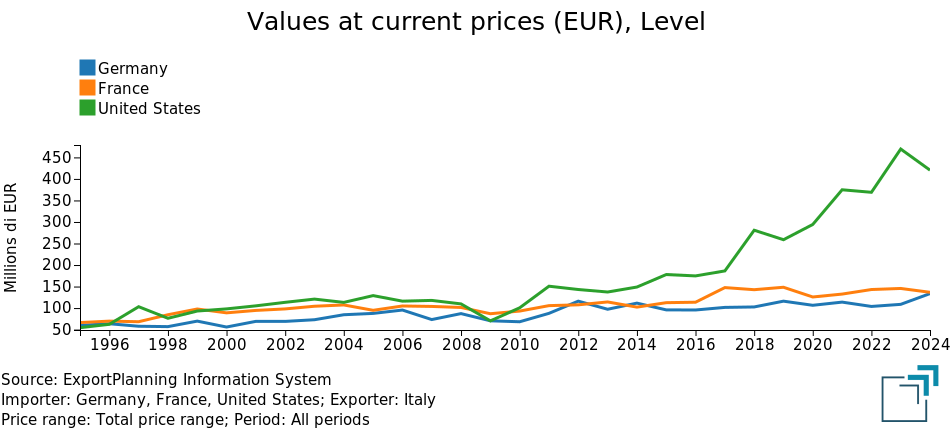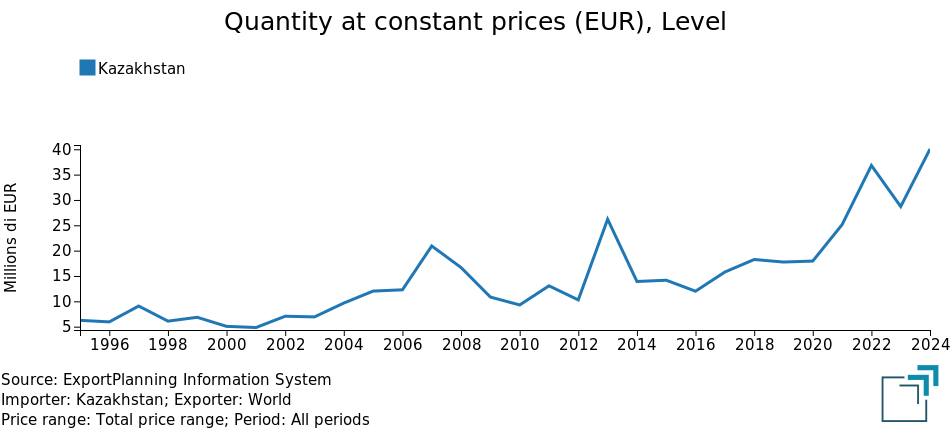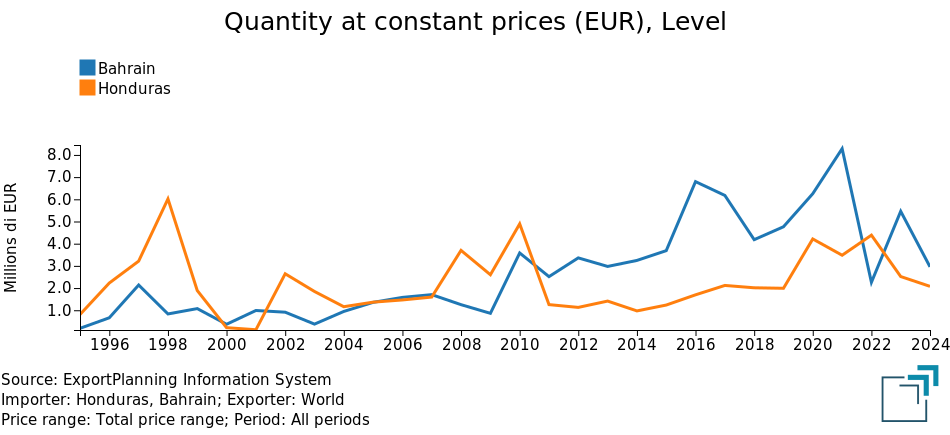Packaging machinery: how to find the most promising export markets?
A new indicator to spot the most attractive export markets for packaging machinery
Published by Silvia Brianese. .
Development stage of Imports Bestpractice Export Importexport Industrial equipment Import International marketing Uncertainty Marketselection Foreign markets Export markets Foreign market analysisWith the latest update of the Market Selection tool on the ExportPlanning platform, a new sector indicator has been introduced, called “Import Development Stage”, which is able to classify each country into one of the three phases of the import life cycle of a specific product: Latency, Growth, and Saturation1.
This indicator is particularly useful for companies interested in expanding, diversifying, and optimizing their export destinations, as it allows them to identify those markets where imports of a given product are in a phase of structural Growth.
This article will use the case study of Packaging and Wrapping Machines.2
The Italian-made Packaging Machinery sector enjoys international recognition, thanks to its excellence and strong export orientation.
In particular, focusing on Packaging or Wrapping Machines and Apparatus (HS842240) – which represents about 60% of Italian exports in the sector – Italy is the world’s leading player, with a value of €2.8 billion in foreign sales in 2024.
Italy is followed – at a relative distance – by Germany (€1.7 billion) and China (€746 million).
In the growth of this segment, the American market has played an important role, being the top export destination for Italian products since 2010 (€450 million), followed by France (€170 million) and Germany (€167 million).
Packaging and wrapping machines: top destination markets

The ongoing uncertainty in the current economic landscape, particularly in US-EU trade relations, highlights the importance for the sector of strengthening geographic diversification strategies for exports, in order to mitigate commercial risk. In this context, the "Import Development Stage" indicator developed by ExportPlanning within the Market Selection tool makes it possible to identify high-potential markets for the export of Packaging and Wrapping Machines.
Packaging and wrapping machines: market segmentation by development stage
Among the emerging markets worth mentioning is certainly Kazakhstan, classified as a market in the Growth phase for imports of Packaging and Wrapping Machines. Limited domestic production, combined with ongoing investments in logistics infrastructure (aimed at making Kazakhstan a key trade hub for Asia), makes this country a high-potential export market. This outlook is also confirmed by the historical analysis of import data, which shows a positive trend in foreign demand for the product.
Packaging and wrapping machines: imports in Kazakhstan

On the other hand, the US market is currently in a Saturation phase, characterized by high levels of product imports and limited dynamism in recent years.
Packaging and wrapping machines: imports in the United States

In addition to the United States, other countries in the Saturation phase for product imports include China, France, and Germany.
Packaging and wrapping machines: imports in China, France, and Germany

Finally, among the countries classified in the Latency phase of the import development cycle for packaging machinery are Bahrain and Honduras. These markets show low import values, accompanied by equally modest import growth rates (net of GDP growth). As a result, these countries appear less attractive from an export diversification strategy perspective.
Packaging and wrapping machines: imports in Bahrain and Honduras

Conclusions
The analysis of emerging markets for imports of packaging and wrapping machines highlights the strategic value of the "Import Development Stage" indicator in Market Selection. The methodology behind the indicator allows higher scores to be assigned to markets with greater export attractiveness, improving the effectiveness of the potential market ranking.
In particular, the usefulness of this indicator becomes evident in contexts where geographic export diversification strategies are needed, providing concrete and effective support for internationalization decisions.
1) Two additional categories are also present: one called “Other”, which includes markets that, for a given product, do not have sufficiently clear characteristics to be confidently assigned to one of the three phases. The other is “Unclassified”, which includes countries for which, for a given product, insufficient data is available regarding imports or GDP. For more details on the methodology used to construct the indicator, refer to the article: Market Selection: the new “Import Development Stage” indicator to discover the most promising markets for export
2) Further application examples can be found in the article: Market Selection: the new “Import Development Stage” indicator to discover the most promising markets for export and in the E-Book (available for free download after registration on the platform): "Global Uncertainty: What New Trade Opportunities?"


